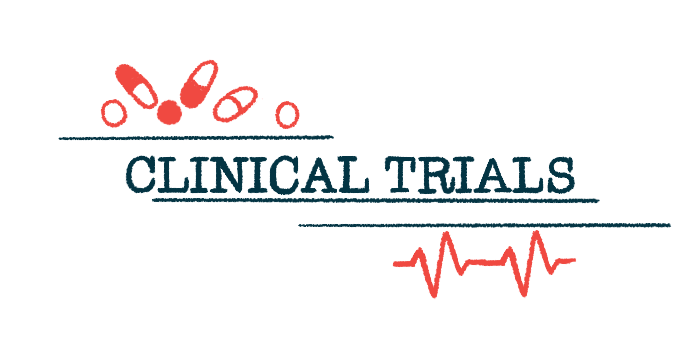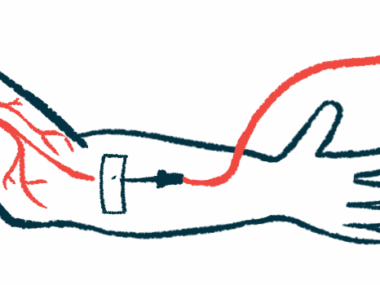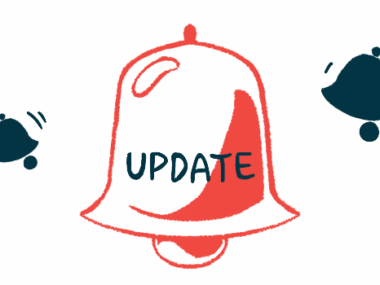AAV patients on BDB-001 achieve remission, cut corticosteroid use
New trial data show therapy candidate can reduce disease activity
Written by |

Use of the experimental therapy BDB-001 helps adults with ANCA-associated vasculitis (AAV) achieve at least partial disease remission, while reducing the need for standard glucocorticoids.
That’s according to new data from a Phase 1/2 clinical trial conducted in China. Glucocorticoids, also commonly called corticosteroids, are a standard AAV treatment, but their long-term use is linked to serious side effects.
The results of the Phase 1/2 study (NCT05197842) were announced by Inflarx, the therapy’s main developer, in a press release reporting the company’s latest financial results, as well as business updates.
The trial had tested BDB-001 plus cyclophosphamide — either alone with a low dose glucocorticoid — against cyclophosphamide plus a standard glucocorticoid dose. It was sponsored by Staidson Biopharmaceuticals, which holds developmental and commercialization rights to BDB-001 in China.
“We believe these findings highlight the potential of [BDB-001] to reduce corticosteroid dependency while maintaining effective disease control in this serious autoimmune condition,” the release stated.
Building on these promising data, Staidson plans to move forward with Phase 3 clinical testing of BDB-001 as a potential treatment for AAV, the release stated.
AAV occurs when abnormal immune responses cause white blood cells called neutrophils to launch an inflammatory attack against small blood vessels, leading to damage. Part of this damage is driven by an overactive complement system, a group of proteins involved in the body’s immune response against threats.
Administered as an into-the-vein (intravenous) infusion, BDB-001 is an antibody-based therapy that works by suppressing C5a, a complement protein involved in neutrophil recruitment and activation and AAV-related inflammation.
The experimental therapy is therefore expected to reduce the number of neutrophils targeting small blood vessels, protecting them from damage and easing symptoms of AAV.
BDB-001 tested at different doses, with and without glucocorticoids
In an earlier Phase 1 clinical trial involving 32 healthy Chinese adults, single and multiple doses of BDB-001 were found to be safe and well tolerated compared with a placebo.
The subsequent Phase 1/2 clinical study took place at multiple sites across China. It enrolled 93 adults diagnosed with granulomatosis with polyangiitis or microscopic polyangiitis, the two most common types of AAV, who required treatment with cyclophosphamide and glucocorticoids, two standard AAV treatments.
Participants were randomly assigned to receive either a low or high dose of BDB-001 plus cyclophosphamide — alone or with a low dose of the glucocorticoid prednisone — in four different groups. A fifth group, which served as the control group, received cyclophosphamide plus standard-dose prednisone.
BDB-001 and cyclophosphamide were administered intravenously, and prednisone by mouth.
The study’s main goal was to assess the proportions of patients achieving at least partial remission after 12 weeks, or about three months, as assessed with the Birmingham Vasculitis Activity Score (BVAS). The results showed similar proportions in the four BDB-001-treated groups (62.5% to 76.5%) compared with the control group (68.4%).
Highest rate of remission achieved without corticosteroids
According to the researchers, the high-dose BDB-001 plus cyclophosphamide groups, with or without glucocorticoids, showed the highest rates of partial remission.
Those data mean that the study met its main goal: showing that BDB-001 could help reduce disease activity without the need for glucocorticoids.
Secondary goals included the proportions of patients who could achieve complete remission, said to occur when all symptoms and signs of the disease disappear. Data showed that 30%-52.9% of patients given BDB-001 across the four groups attained complete remission. That compared with 5.3% of those in the control group.
Overall, the highest rates of complete remission were achieved with BDB-001 plus cyclophosphamide alone, regardless of BDB-001 dose.
Severe side effects occurred in one-third (34.4%) of participants, but the frequency in the BDB-001-treated groups was similar to or lower than in the control group (18.8%-41.2% vs. 47.4%), the researchers noted. Serious side effects occurred in about one-fourth (24.7%) of patients, and were least frequent in the group of low-dose BDB-001 plus cyclophosphamide, and no prednisone.
“Based on the data, Staidson plans to advance BDB-001 into Phase 3 trials in AAV,” the release stated.







